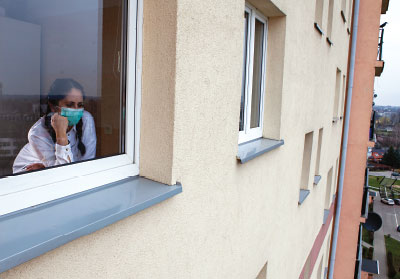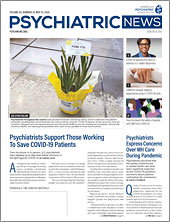The rapid spread of COVID-19 has led officials across the country to enact measures aimed at reducing contact with other people and slowing virus transmission. Dramatic actions can have unintended consequences, however. In an article published in JAMA Psychiatry, mental health experts described one such consequence of extended social isolation—an increased risk of suicide.
“Concerns about negative secondary outcomes of COVID-19 prevention efforts should not be taken to imply that these public health actions should not be taken,” wrote Mark Reger, Ph.D., the chief of Psychology Services at the Veterans Affairs Puget Sound Health System, and colleagues. “However, implementation should include a comprehensive approach that considers multiple U.S. public health priorities, including suicide prevention.”
The authors highlighted nine broad areas where the pandemic and subsequent social isolation measures may increase the risk of suicide:
•
Job loss and economic stress.
•
Isolation from friends/family, including those in the hospital.
•
Decreased access to churches and community centers that provide social support.
•
Additional barriers to mental health services, including the restriction of visitors accompanying patients.
•
Worsening medical problems due to stress and other factors.
•
Increased stress and burnout among health care professionals.
•
National anxiety from 24/7 news coverage of the pandemic.
•
Increased sales of firearms, the most common method of suicide in the United States.
•
Seasonal late-spring/early summer convergence of peak COVID-19 prevention efforts and peak rates of suicide in the United States.
“We should also not overlook that in addition to stress and anxiety, many people are struggling with guilt, which is known to have toxic effects on mental health,” added suicide expert Maria A. Oquendo, M.D., Ph.D., the Ruth Meltzer Professor and Chair of Psychiatry at the Perelman School of Medicine at the University of Pennsylvania and past president of APA. Such guilt can include worries that one is not doing enough to help care for others or fears over potentially exposing others to the virus, she told Psychiatric News. There is so much uncertainty about how this virus spreads and who might be infected (increasing analyses suggest that there are a high number of asymptomatic COVID-19 cases) that some people feel guilty even doing necessary activities like grocery shopping, she said.
Despite this endless barrage of stressors, there are opportunities to improve suicide prevention efforts during the pandemic, Reger and colleagues noted. They recommended that health professionals take steps now to determine ways to incorporate mental health screening into COVID-19 screening and prevention efforts and look for additional ways to reach patients using tele-mental health services. They also noted the value of social media to help patients maintain social connections despite physical restrictions.
Professionals can also show support to patients through brief, supportive letters or emails, the authors noted. This concept of “caring letters” has been around for decades, and some studies have shown these letters to be an effective tool to prevent suicide.
“There may be a silver lining to the current situation. Suicide rates have declined in the period after past national disasters (for example, the September 11, 2001, terrorist attacks),” Reger and colleagues wrote. “One hypothesis is the so-called pulling together effect, whereby individuals undergoing a shared experience might support one another, thus strengthening social connectedness.”
Oquendo agreed that it is not uncommon for suicide rates to recede in the context of a major crisis, “but we cannot be complacent; the entire population is going through a period of heightened stress right now. In the next few months, we will see the psychiatric [aftereffects] of this crisis emerge.” ■
“Suicide Mortality and Coronavirus Disease 2019—A Perfect Storm?” is posted
here.


